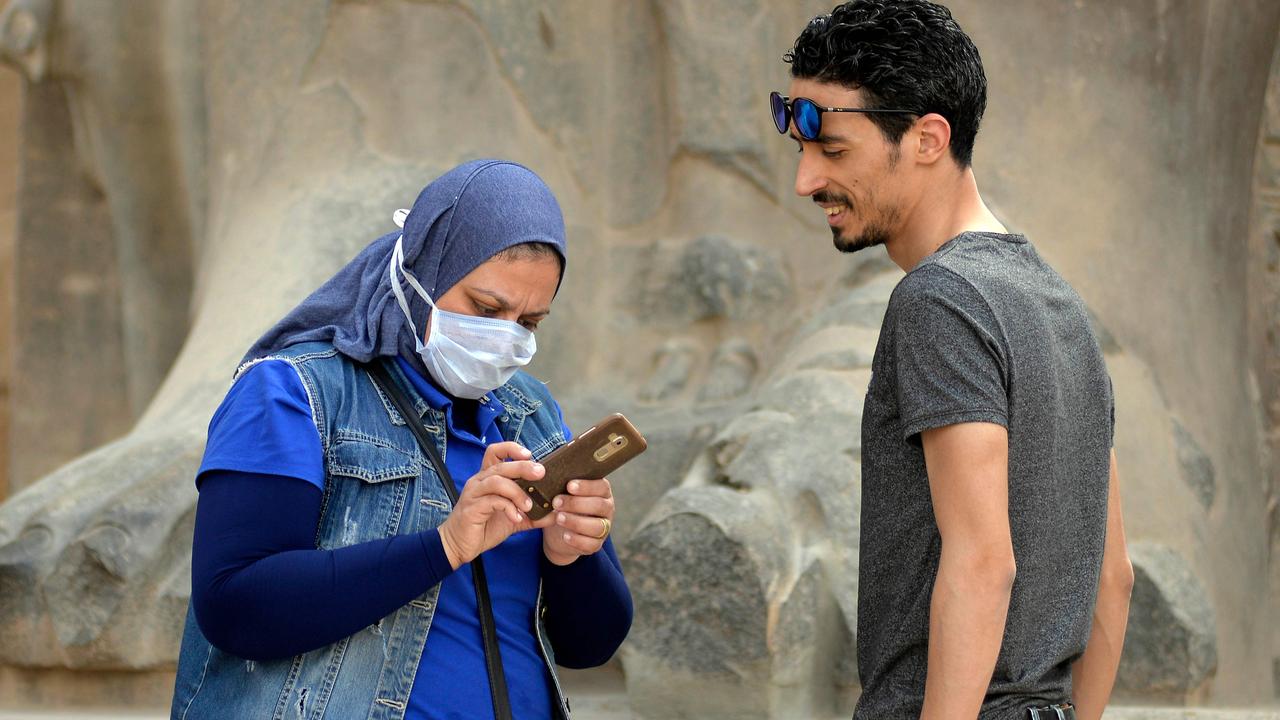Coronavirus: Smartphones harbour lots of germs and bacteria – here’s how to clean them
People are doing everything they can to avoid catching coronavirus and your phone needs to be part of a new daily routine.

While Australians who fear contracting coronavirus fight over bottles of hand sanitiser and lash out at anyone seen coughing on public transport many of us are walking around with veritable Petri dishes in our pockets and handbags.
Studies have found our phones can harbour lots of bacteria, with one study conducted a few years ago by a British insurance company finding phones have more bacteria than a toilet seat
With most of us touching our phones hundreds, if not thousands of times a day, that means our freshly cleaned hands are swiping across often germ-riddled panels of glass that are then held up to our faces which we are trying to avoid touching.
RELATED: Follow the latest coronavirus updates
That’s why you should add cleaning your phone to the list of daily decontaminations.
The novel coronavirus COVID-19 is thought to spread from person to person through close contact with infectious people, contact with the droplets expelled by coughing and sneezing, and touching surfaces where those droplets have landed, such as handrails or doorknobs.

RELATED: What should I do if I’m sick?
RELATED: Qantas announces massive flight changes
Using a hands-free headset like AirPods or other wireless headphones, or even the wired earphones that likely came with your phone, is one way to avoid bringing the infectious device to your face.
But cleaning your phone is probably the best level of defence.
Obviously you can’t just run it under the tap, however.
Smartphones are sophisticated devices that can require special care to clean to avoid damaging them.
But while they require special care, in most cases they don’t require special products.
RELATED: Longer wait for cheaper iPhone

HOW TO CLEAN YOUR PHONE
We’ll start with the devices made by Apple, as they’re the most widely used smartphone in Australia (by a narrow but noticeable margin).
It’s also the easiest place to start because the company provides all the information you need on its website.
The main thing to be aware of is the oleophobic coating on your iPhone’s screen.
Apple uses this oil-repellent coating to avoid smudges from your fingerprints, but this means you have to take care not to damage the coating.
Abrasive material and some cleaning products can strip away the coating.
Apple recently updated its advice to say using a 70 per cent isopropyl alcohol wipe on the “hard, non-porous” surfaces of Apple products should be OK after years of warning against it.
It specifically identified Clorox disinfecting wipes as ones that would work, but anything around that alcohol content should be OK.

RELATED: Follow the latest coronavirus updates
A reporter from the Wall Street Journal recently wiped an iPhone 8 with Clorox wipes more than 1000 times and said it did more damage to her hands than the phone screen.
You don’t need to be that thorough cleaning your phone, once or twice should do the trick.
Turn your phone off before cleaning it, and if you’re using isopropyl alcohol dilute it with water and spray it onto a cloth, not the phone itself.
Don’t use bleach or compressed air and keep any moisture away from the charging port.
If you have one of the newer iPhone 11 or 11 Pro models you can use a soft, lint-free cloth with warm soapy water, but it isn’t advised to use water on any of the older devices.
Using a screen protector also means you don’t have to worry as much about the oleophobic coating.
You can also purchase specialist devices that use ultraviolet light to kill bacteria on your phone while also charging them at the same time, but it’ll cost you significantly more than a box of disinfectant wipes.
Samsung also recommends not using any solution with strong chemicals, like glass cleaners.
Most other phones should be fine using similar cleaning methods as the ones Apple recommends, just switch the phone off before cleaning, try not to get it too wet, and let it sit out to dry for a bit before powering it back on.
Have you ever cleaned your phone before? Let us know how you did it in the comments below.



